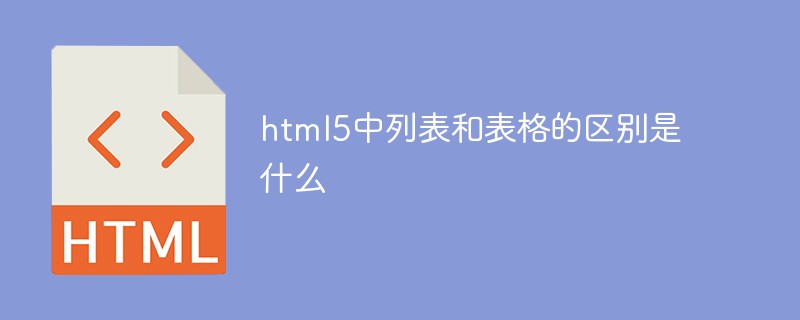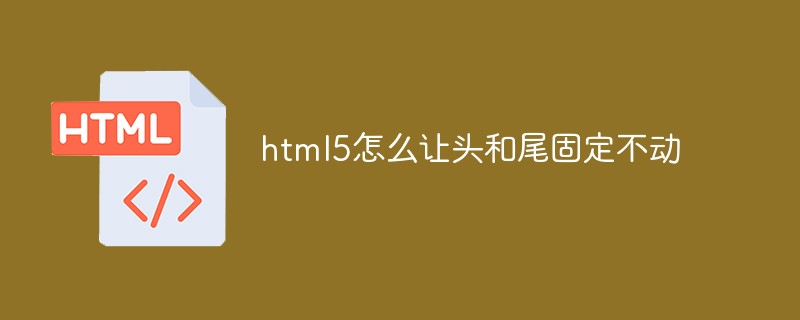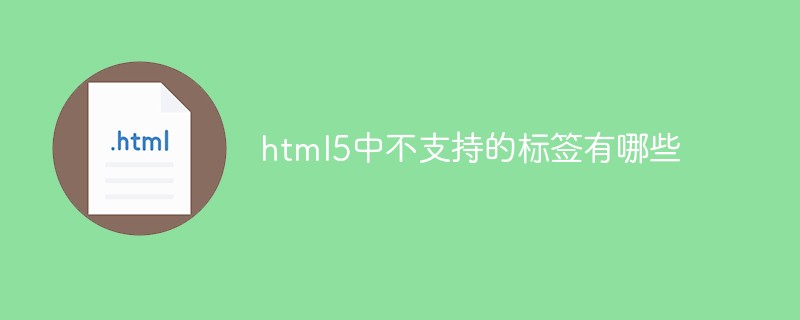 Web Front-end
Web Front-end JS Tutorial
JS Tutorial The relationship between JS execution environment, scope chain, variable objects and active objects
The relationship between JS execution environment, scope chain, variable objects and active objectsJS execution environment
Execution context (EC) or execution context is an extremely important concept in JS
The execution environment is divided into three types (global execution environment, function Execution environment, evel() execution environment)
js associates a variable object with each execution environment. All variables and functions defined in the environment are stored in this object
Composition of EC
When JavaScript code is executed, it will enter different execution environments (execution contexts). These execution environments Will form an execution environment stack (Execution context stack, ECS). See the picture below: 
Variable Object
Variable Object (VO): A variable object is an object containing variables. It is no different from an ordinary object except that we cannot access it. . Variable objects store variable and function declarations defined in the context
Variable objects and active objects (AO)
Active objects and variable objects are actually one It’s just that the variable object is standardized or implemented by the engine and cannot be accessed in the JavaScript environment. Only when entering an execution context will the variable object of this execution context be activated, so it is called activation object
, and only the activated variable object, that is, the various properties on the active object can be accessed.
The active object is created when entering the function execution environment, and it is initialized through the arguments property of the function. The arguments property value is an Arguments object.
The relationship between variable objects and active objects
Before entering the execution phase, the attributes in the variable object (VO) cannot be accessed! But after entering the execution phase, the variable object (VO) is transformed into an active object (AO), and the properties inside can be accessed, and then the execution phase operations begin.They are actually the same object, but they are in different life cycles of the execution environment.
AO 实际上是包含了 VO 的。因为除了 VO 之外,AO 还包含函数的 parameters,以及 arguments 这个特殊对象。也就是说 AO 的确是在进入到执行阶段的时候被激活,但是激活的除了 VO 之外,还包括函数执行时传入的参数和 arguments 这个特殊对象。
AO = VO function parameters arguments
Execution environment analysis
The global execution environment is the most peripheral execution environment. The global execution environment is considered to be the window object. Therefore all global variables and functions are created as properties and methods of the window object.
The execution order of js is determined based on the function call. When a function is called, the variable object of the function environment is pushed into an environment stack. After the function is executed, the stack pops the variable object of the function and hands control to the previous execution environment variable object.
eg:
var scope = "global";
function fn1(){
return scope;
}
function fn2(){
return scope;
}
fn1();
fn2();The demonstration is as follows:

[[Scope]] Scope
The scope of the variable
There are only two scopes of variables: global variables and local variables
全局作用域:最外层函数定义的变量拥有全局作用域,即对任何内部函数来说,都是可以访问的:eg:
var outerVar = "outer";
function fn(){
console.log(outerVar);
}
fn();//result:outer局部作用域:局部作用域一般只在固定的代码片段内可访问到,而对于函数外部是无法访问的
function fn(){
var innerVar = "inner";
}
fn();
console.log(innerVar);// ReferenceError: innerVar is not defined注意:函数内部声明变量的时候,一定要使用var命令。如果不用的话,你实际上声明了一个全局变量!
function fn(){
age = 18;
}
fn();
console.log(age);// 18Let’s look at an interesting phenomenon:
var scope = "global";
function fn(){
console.log(scope);//result:undefined
var scope = "local";
console.log(scope);//result:local;
}
fn();Analysis: The first output is actually undefined. I originally thought it would access external global variables (scope="global"), but it didn't. This can be regarded as a feature of JavaScript. As long as a local variable is defined in the function, the function will "declare" the variable in advance when parsing , which is equivalent to the following code:
var scope = "global";
function fn(){
var scope;//提前声明了局部变量
console.log(scope);//result:undefined
scope = "local";
console.log(scope);//result:local;
}
fn(); [[Scopr Chain]] Scope chain
Understanding: According to the mechanism that internal functions can access external function variables, chain search is used to determine which data can be accessed by internal functions. This is the role Domain chain
Environment variables are given above. Let's carefully analyze the scope chain
When a function is called for the first time, an execution context and corresponding scope chain will be created, and the scope chain will be assigned to a special internal properties ([scope]). The function's activation object is then initialized using the values of this, arguments (arguments do not exist in the global environment), and other named arguments. The variable object of the current execution environment is always at position 0 of the scope chain. Take the above small example of execution environment analysis as an example to illustrate: when fn1 is called for the first time.

Analysis: You can see that there is no scope variable in the fn1 active object, so we search backward along the scope chain, and the result is found in the global variable object scope, so the scope value in the global variable object is returned.
Analyze the following code:
function outer(){
var scope = "outer";
function inner(){
return scope;
}
return inner;
}
var fn = outer();
fn();
Summary
To be honest, this section is really difficult, and I still understand it now If you don’t understand, what do you think, friends who are learning front-end? If you think you have learned this section, you can leave me a message. I really don’t understand the content of this section. I hope someone who knows it can give me some help! Thanks!
Related articles:
A brief discussion on the execution environment (scope) and scope chain in javascript
A commonplace talk about the native JS execution environment and scope
Related videos:
js advanced object-oriented and component development video tutorial
The above is the detailed content of The relationship between JS execution environment, scope chain, variable objects and active objects. For more information, please follow other related articles on the PHP Chinese website!
 html5的div一行可以放两个吗Apr 25, 2022 pm 05:32 PM
html5的div一行可以放两个吗Apr 25, 2022 pm 05:32 PMhtml5的div元素默认一行不可以放两个。div是一个块级元素,一个元素会独占一行,两个div默认无法在同一行显示;但可以通过给div元素添加“display:inline;”样式,将其转为行内元素,就可以实现多个div在同一行显示了。
 html5中列表和表格的区别是什么Apr 28, 2022 pm 01:58 PM
html5中列表和表格的区别是什么Apr 28, 2022 pm 01:58 PMhtml5中列表和表格的区别:1、表格主要是用于显示数据的,而列表主要是用于给数据进行布局;2、表格是使用table标签配合tr、td、th等标签进行定义的,列表是利用li标签配合ol、ul等标签进行定义的。
 html5怎么让头和尾固定不动Apr 25, 2022 pm 02:30 PM
html5怎么让头和尾固定不动Apr 25, 2022 pm 02:30 PM固定方法:1、使用header标签定义文档头部内容,并添加“position:fixed;top:0;”样式让其固定不动;2、使用footer标签定义尾部内容,并添加“position: fixed;bottom: 0;”样式让其固定不动。
 HTML5中画布标签是什么May 18, 2022 pm 04:55 PM
HTML5中画布标签是什么May 18, 2022 pm 04:55 PMHTML5中画布标签是“<canvas>”。canvas标签用于图形的绘制,它只是一个矩形的图形容器,绘制图形必须通过脚本(通常是JavaScript)来完成;开发者可利用多种js方法来在canvas中绘制路径、盒、圆、字符以及添加图像等。
 html5中不支持的标签有哪些Mar 17, 2022 pm 05:43 PM
html5中不支持的标签有哪些Mar 17, 2022 pm 05:43 PMhtml5中不支持的标签有:1、acronym,用于定义首字母缩写,可用abbr替代;2、basefont,可利用css样式替代;3、applet,可用object替代;4、dir,定义目录列表,可用ul替代;5、big,定义大号文本等等。
 html5废弃了哪个列表标签Jun 01, 2022 pm 06:32 PM
html5废弃了哪个列表标签Jun 01, 2022 pm 06:32 PMhtml5废弃了dir列表标签。dir标签被用来定义目录列表,一般和li标签配合使用,在dir标签对中通过li标签来设置列表项,语法“<dir><li>列表项值</li>...</dir>”。HTML5已经不支持dir,可使用ul标签取代。
 Html5怎么取消td边框May 18, 2022 pm 06:57 PM
Html5怎么取消td边框May 18, 2022 pm 06:57 PM3种取消方法:1、给td元素添加“border:none”无边框样式即可,语法“td{border:none}”。2、给td元素添加“border:0”样式,语法“td{border:0;}”,将td边框的宽度设置为0即可。3、给td元素添加“border:transparent”样式,语法“td{border:transparent;}”,将td边框的颜色设置为透明即可。
 html5是什么意思Apr 26, 2021 pm 03:02 PM
html5是什么意思Apr 26, 2021 pm 03:02 PMhtml5是指超文本标记语言(HTML)的第五次重大修改,即第5代HTML。HTML5是Web中核心语言HTML的规范,用户使用任何手段进行网页浏览时看到的内容原本都是HTML格式的,在浏览器中通过一些技术处理将其转换成为了可识别的信息。HTML5由不同的技术构成,其在互联网中得到了非常广泛的应用,提供更多增强网络应用的标准机。


Hot AI Tools

Undresser.AI Undress
AI-powered app for creating realistic nude photos

AI Clothes Remover
Online AI tool for removing clothes from photos.

Undress AI Tool
Undress images for free

Clothoff.io
AI clothes remover

AI Hentai Generator
Generate AI Hentai for free.

Hot Article

Hot Tools

Dreamweaver Mac version
Visual web development tools

MinGW - Minimalist GNU for Windows
This project is in the process of being migrated to osdn.net/projects/mingw, you can continue to follow us there. MinGW: A native Windows port of the GNU Compiler Collection (GCC), freely distributable import libraries and header files for building native Windows applications; includes extensions to the MSVC runtime to support C99 functionality. All MinGW software can run on 64-bit Windows platforms.

MantisBT
Mantis is an easy-to-deploy web-based defect tracking tool designed to aid in product defect tracking. It requires PHP, MySQL and a web server. Check out our demo and hosting services.

Atom editor mac version download
The most popular open source editor

Notepad++7.3.1
Easy-to-use and free code editor






